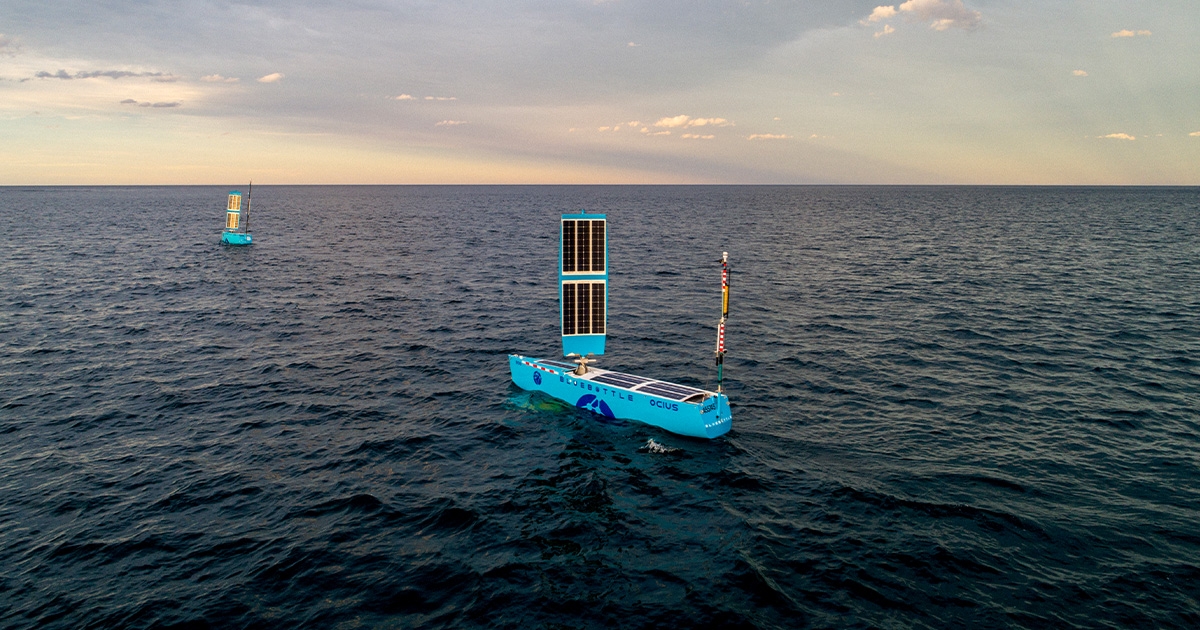Check the Tech: Autonomous Surveillance OPs with USVs

When it comes to optimizing maritime surveillance in offshore—and often contested—waters, uncrewed surface vehicles, or USVs, present the ideal package for safe, cost-effective, and scalable remote operations.
The pace of USV advancement is primarily being driven by major defense, offshore energy, and science-focused entities, all seeking to establish new and validated in-field procedures that place humans ‘on’ the loop, as opposed to in it.
USVs are proving instrumental, with marine technologists in constant pursuit of the optimal balance—the marine engineering sweet spot—between operational utility and mission endurance.
USV DEVELOPER FROM DOWN UNDER
Australian outfit Ocius (Latin for “fleet”), headquartered in Sydney, is one such USV developer leading the charge. Following a rebrand in 2014, Ocius (formerly Solar Sailor) made the strategic pivot into USV R&D, and the team began working on uncrewed solar-, wind-, and wave-powered vessels, which resulted in a Capability Technology Demonstrator (CTD) award from the Defence Science and Technology Group in 2015.
This helped fuse a long-standing partnership with Thales, which kicked off with the creation of a 5.6 m prototype USV, AKA Bruce, for ASW ops in 2017. Following a series of successful demos to the Australian Naval community, additional defense contracts followed, including a $5.5 million injection in 2020 to build five next-gen Bluebottle USVs, which was successfully completed in March 2022.
POWER, PAYLOAD, PERFROMANCE
There are currently two models within the Bluebottle Class of Ocius USVs: the 5.6 m Bruce and the 6.8 m Beth. Both are operational in sea state 5, launchable from a conventional boat ramp or deck crane, and—most notably—are powered by solar, wind, and wave energy.
Harnessing energy from the surrounding environment hinges on the USV’s patented solar sail that, when deployed, can capitalize on solar and wind sources, and its custom rudder-flippers, which steer, guide, and generate forward thrust from the pitching of the vessel in the ocean waves.
Multiple sensor suites are available (integrated into the hull or supported by the comms mast) and are supported by a networked communication system to enable live event tracking.
With a modular payload capacity of up to 330 kg, top speeds of 6.5 knots, and an average power of 150W to partner payload with eight hours of sun (Beth), Bluebottle USVs are designed with long-range, autonomous, and persistent situational awareness, detection, and classification as mission-critical requirements.
SCALING THE FUTURE
Over the last 15 months, Ocius USVs have completed 25,000 NM—unescorted—in Australia's EEZ, with full approval by the Australian Maritime Safety Authority (AMSA).
Right now, Ocius is continuing to work with Thales, testing new thin line arrays deployed from the Bluebottle keel winch to significant and varying depths.
Ocius is also under contract with Trusted Autonomous Systems Defence CRC, UNSW, Australian Maritime College, and Australian Border Force on various USV-related projects, with details to be released in due course.
Speaking exclusively to ON&T, Ocius CEO Robert Dane, said: “This is a very busy and rewarding time in Ocius’ journey to build and field superior, 100% Australian-made USVs capable of stripping away the logistical challenges—and of course costs—associated with relying on fossil fuels as a power source. At Ocius, we like to say that we have the lean, green USVs for dull, dirty, and dangerous operations.”
This spotlight was originally featured in ON&T Magazine's April 2023 issue. Click here to read more.

